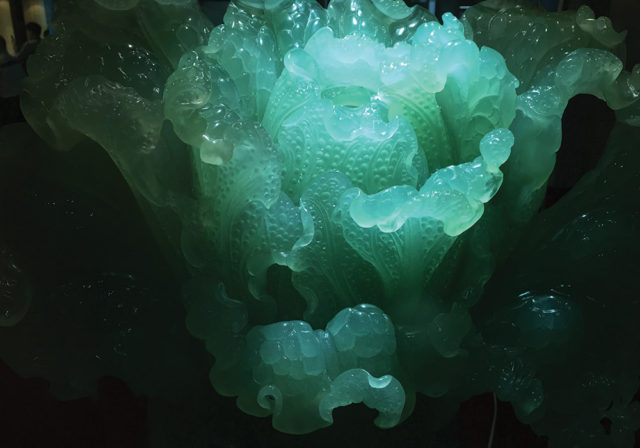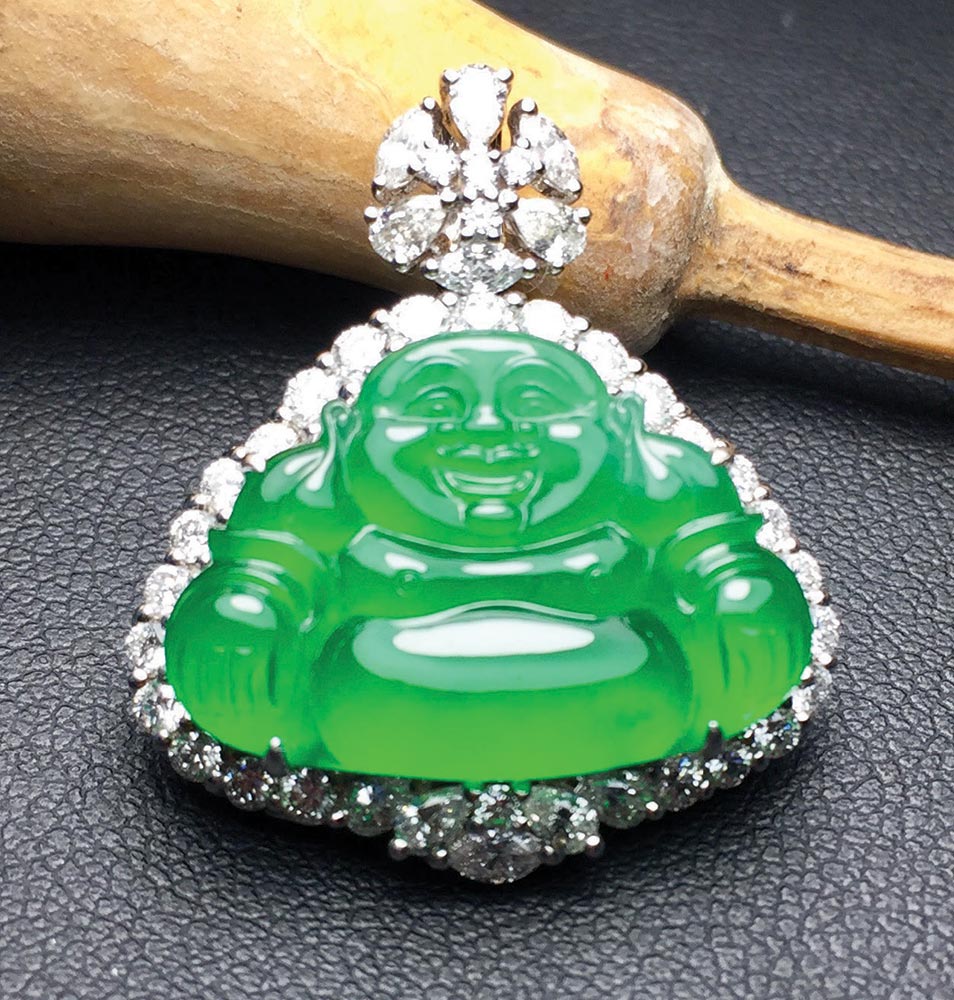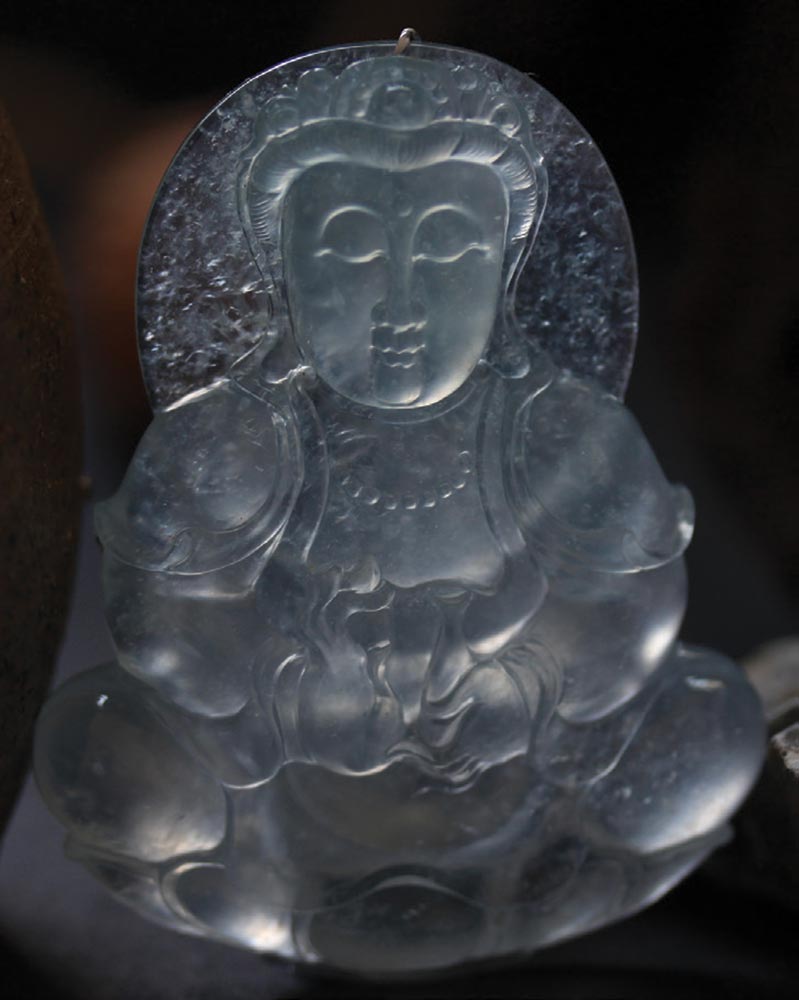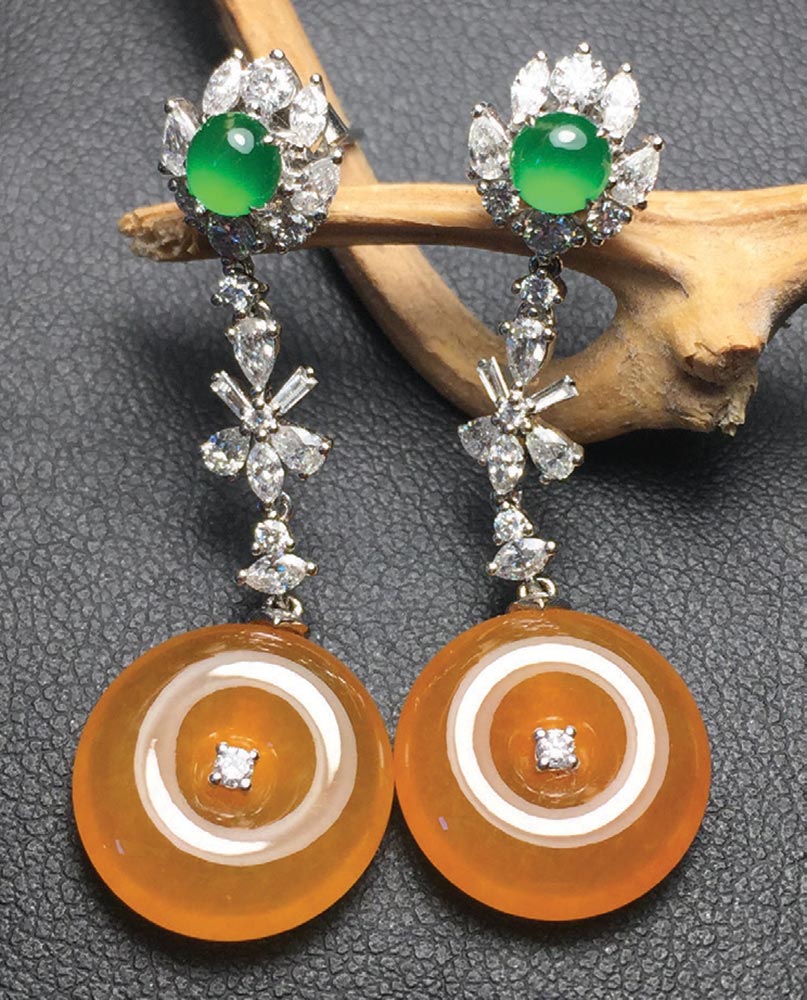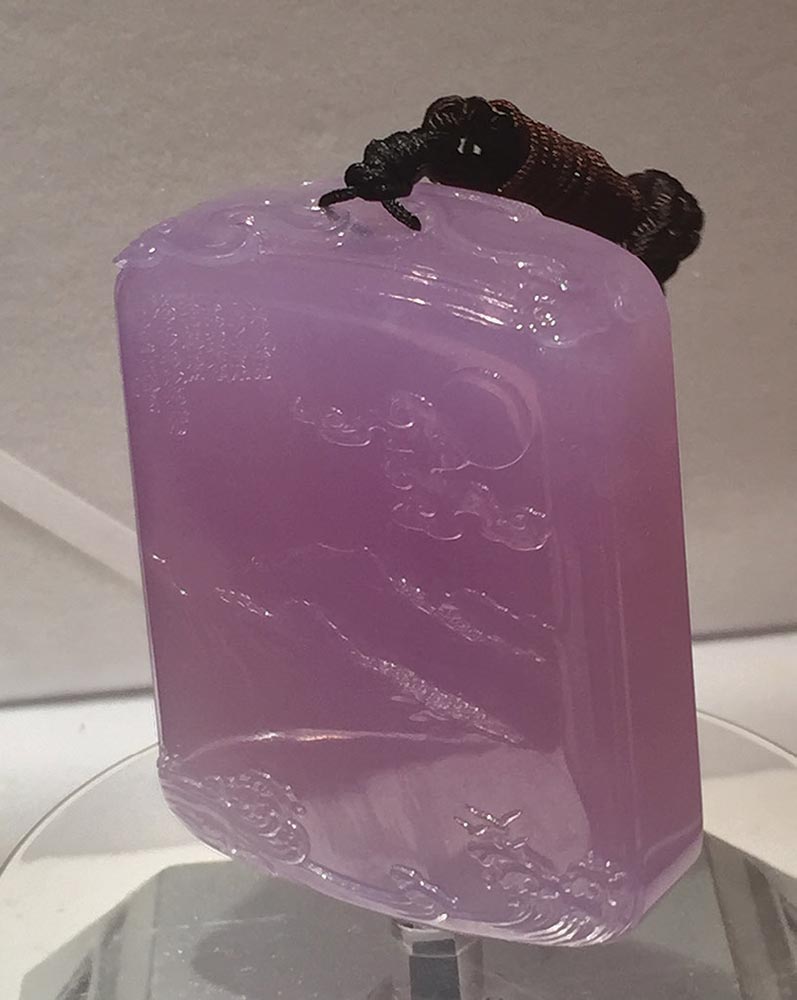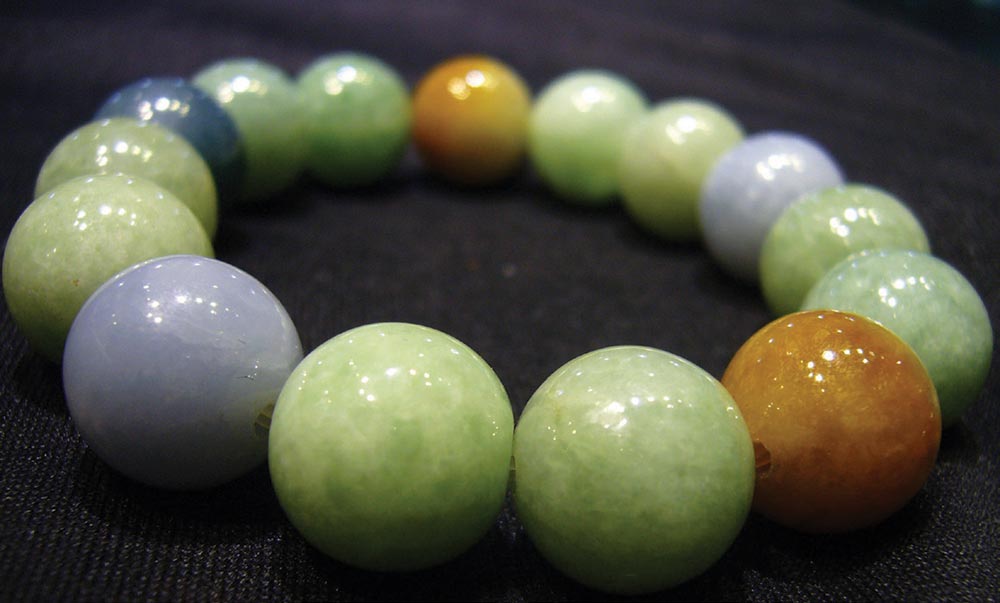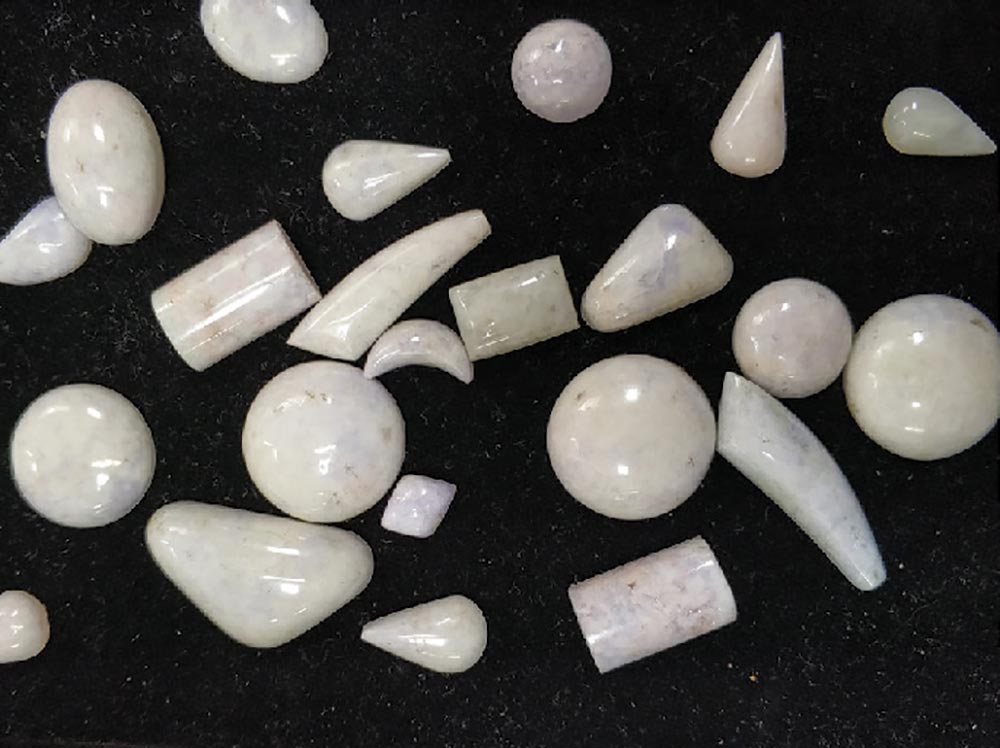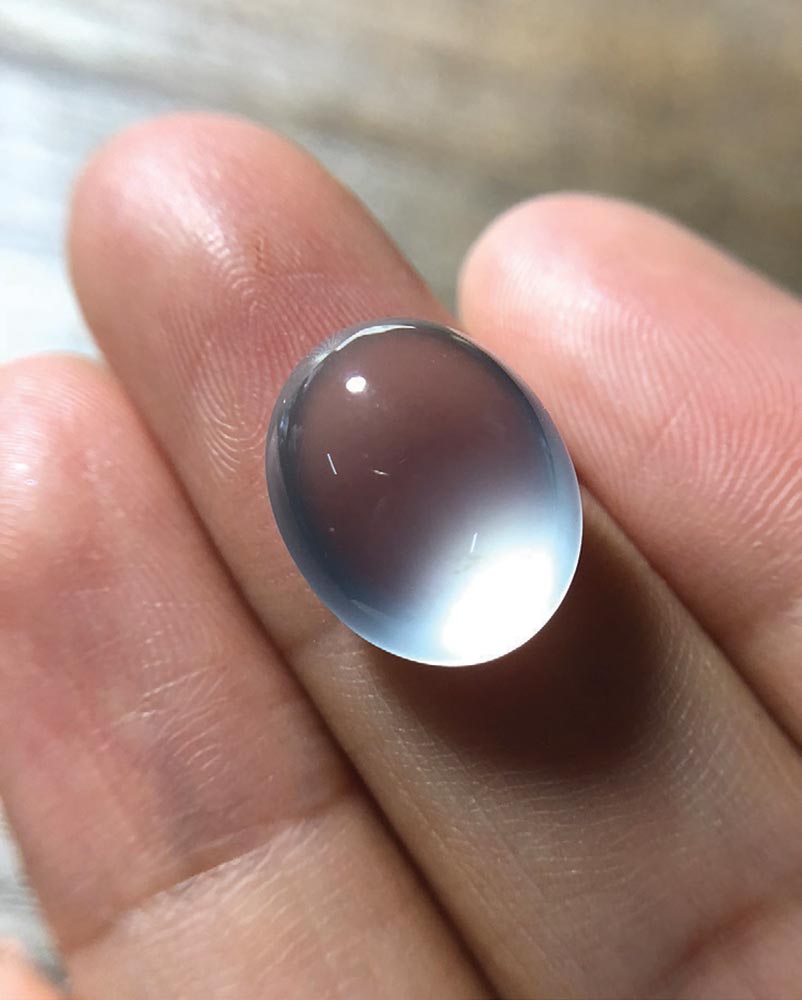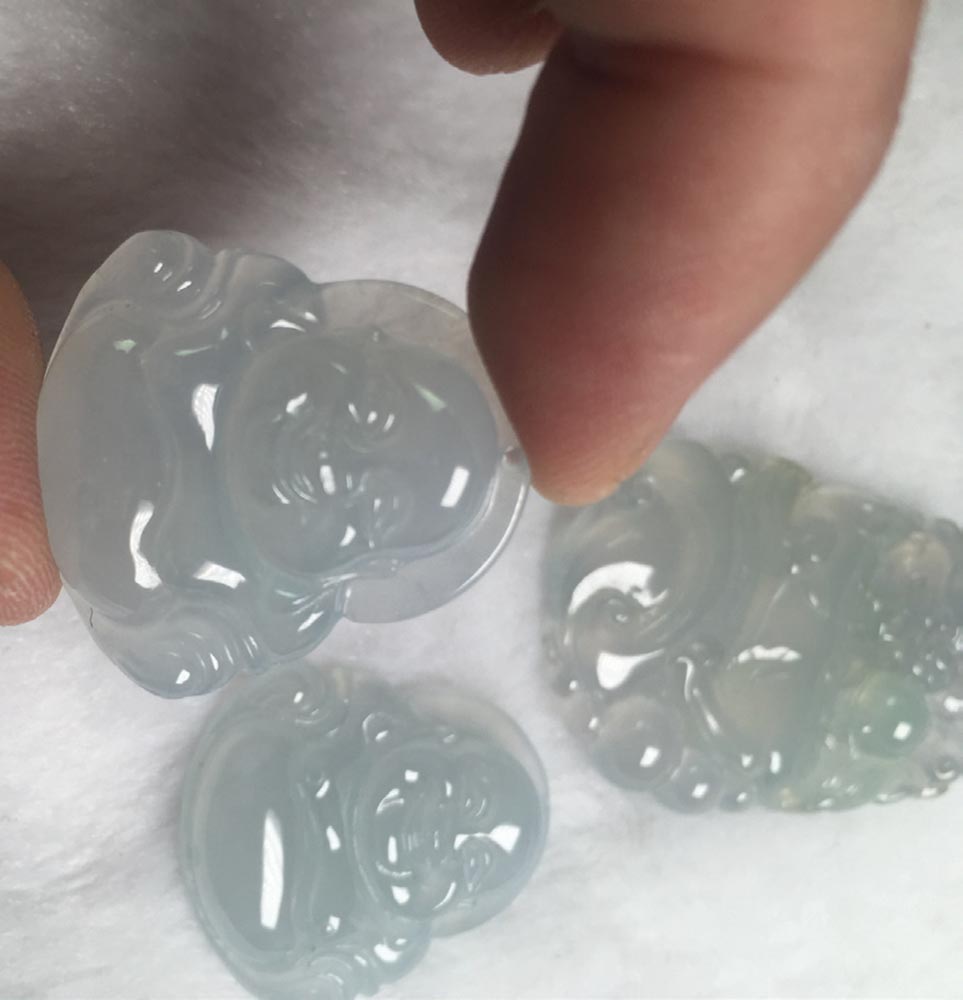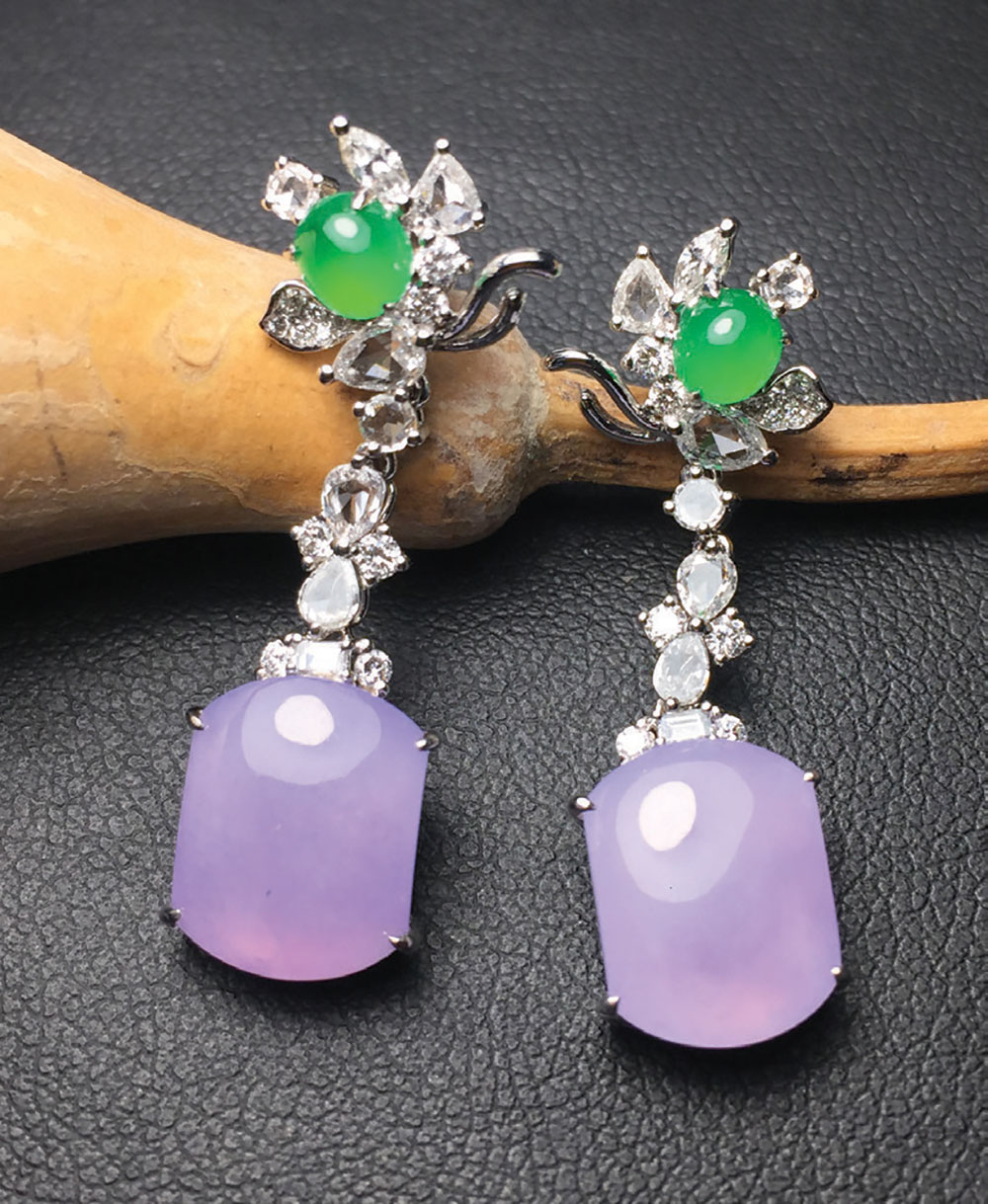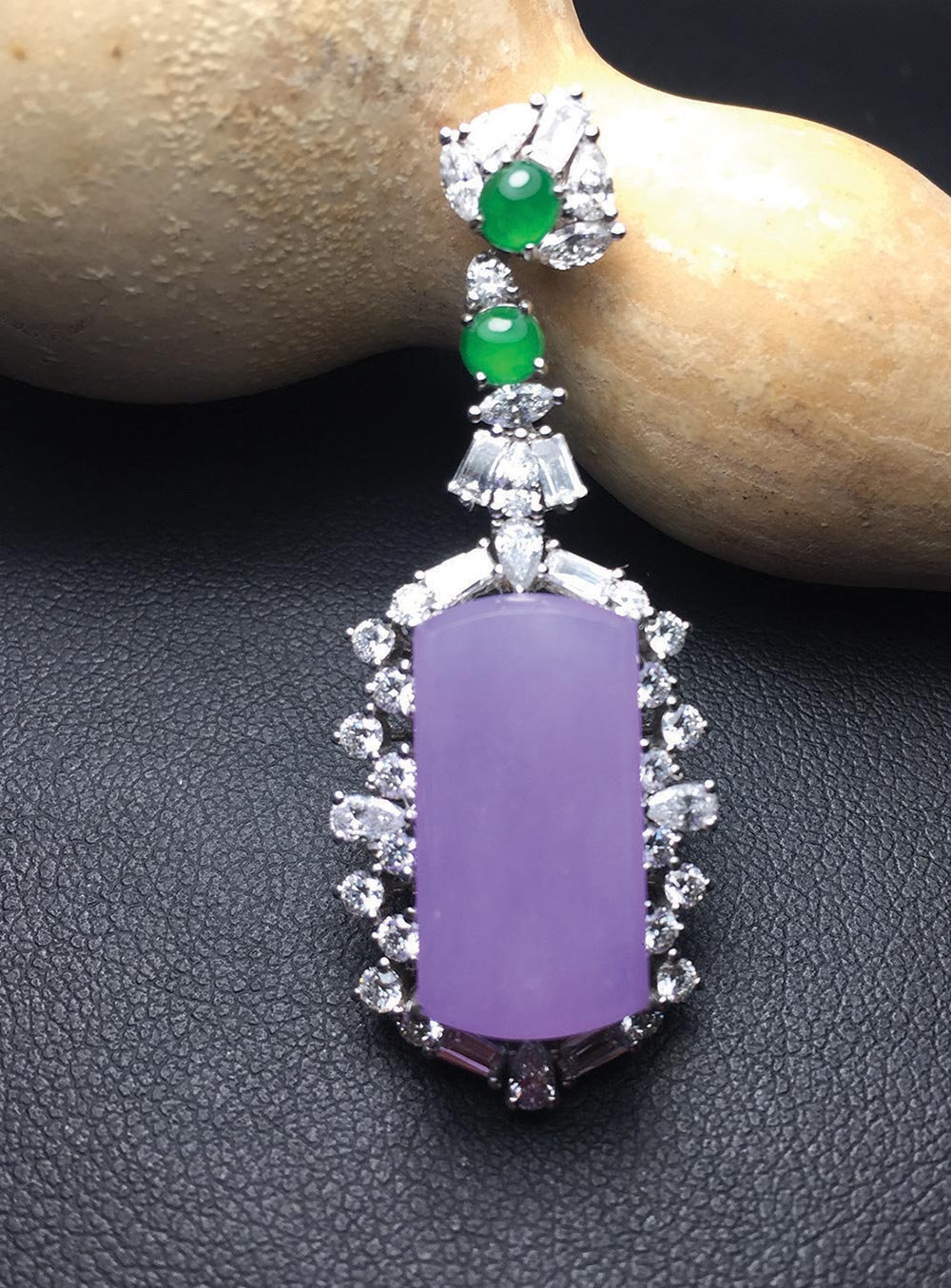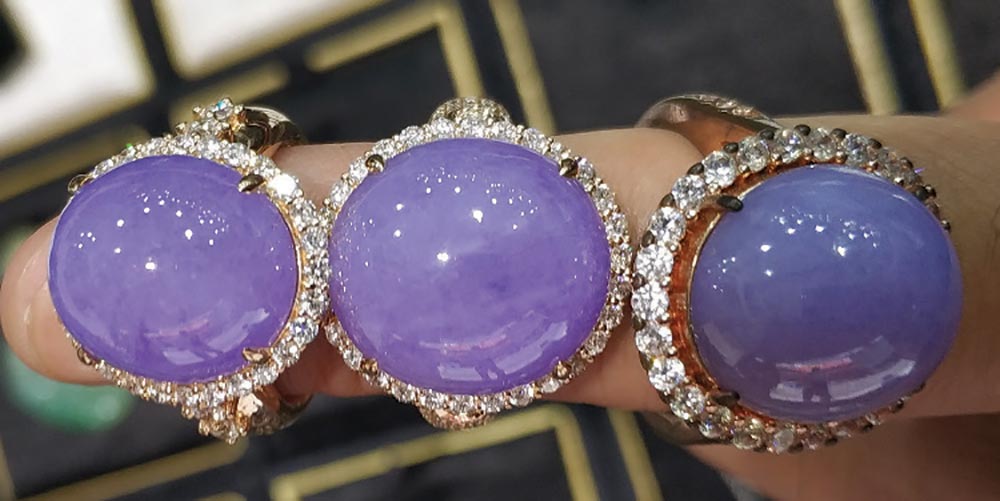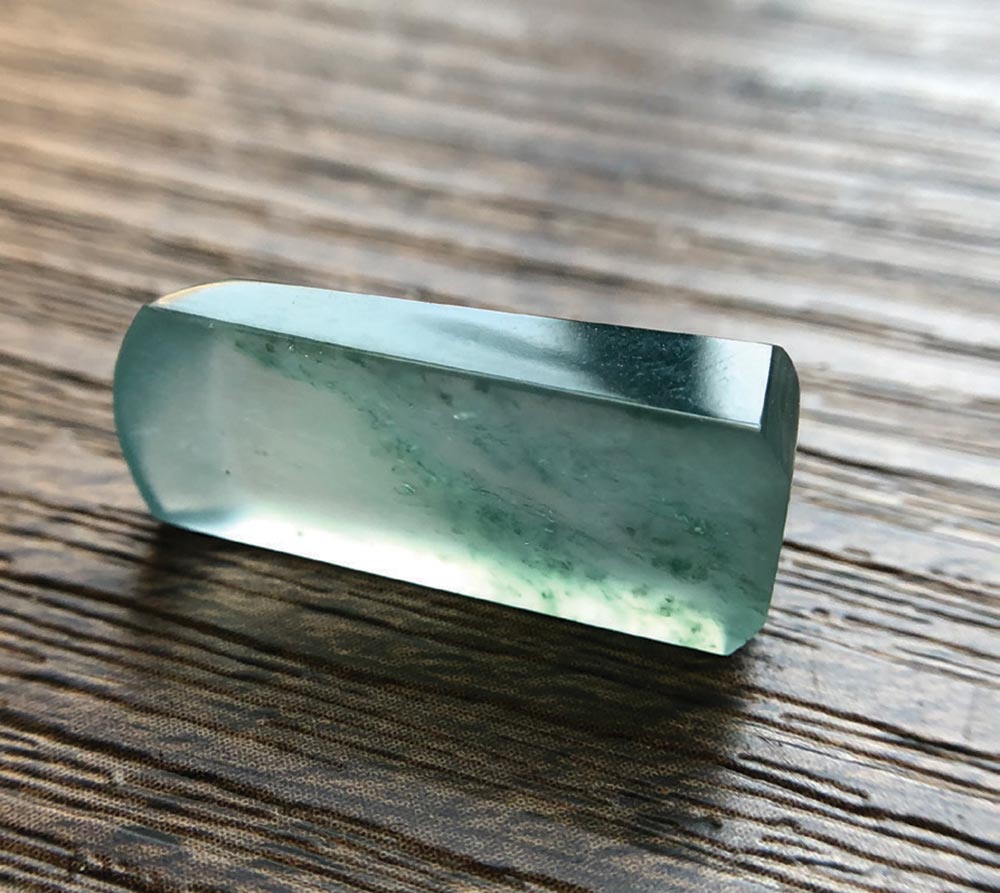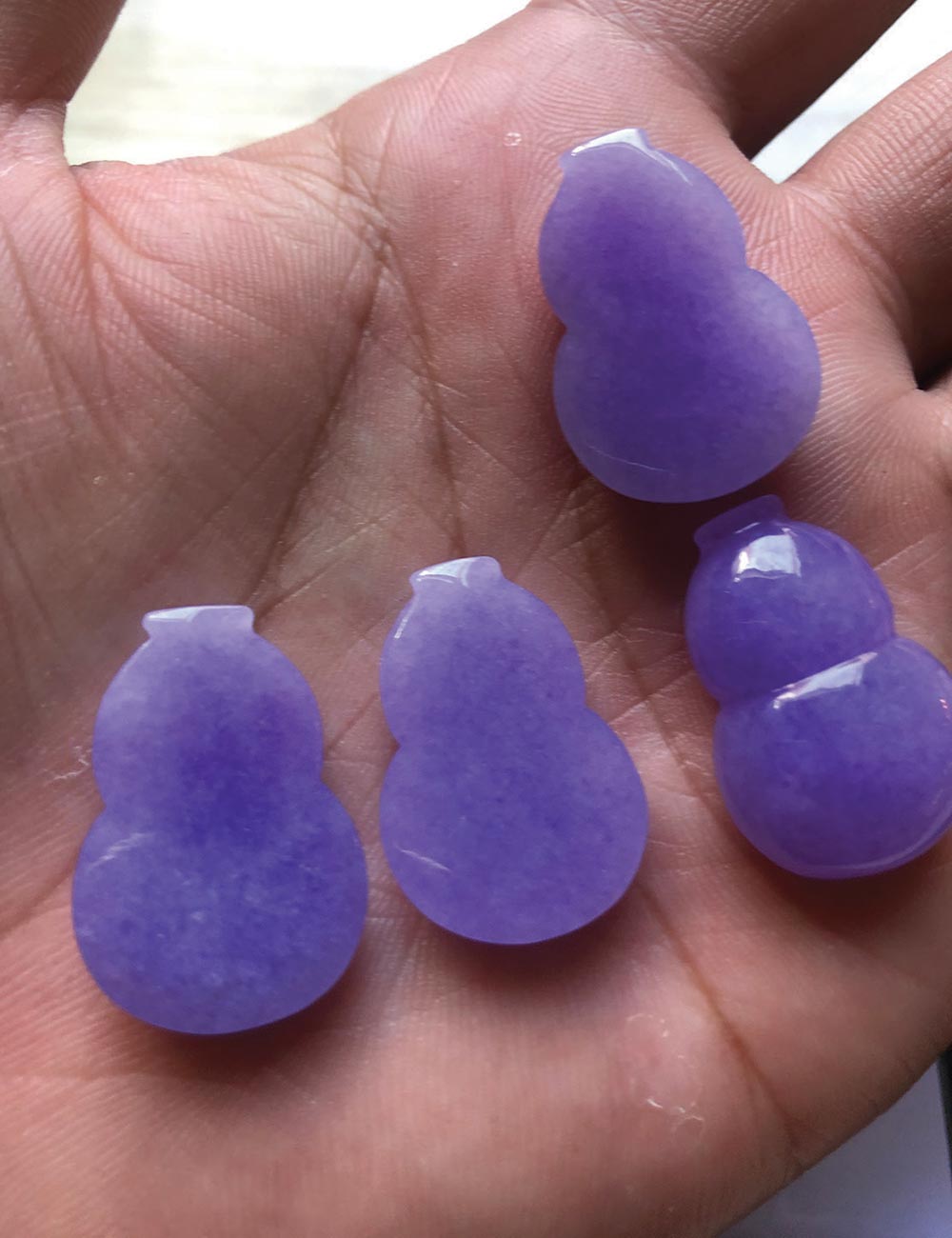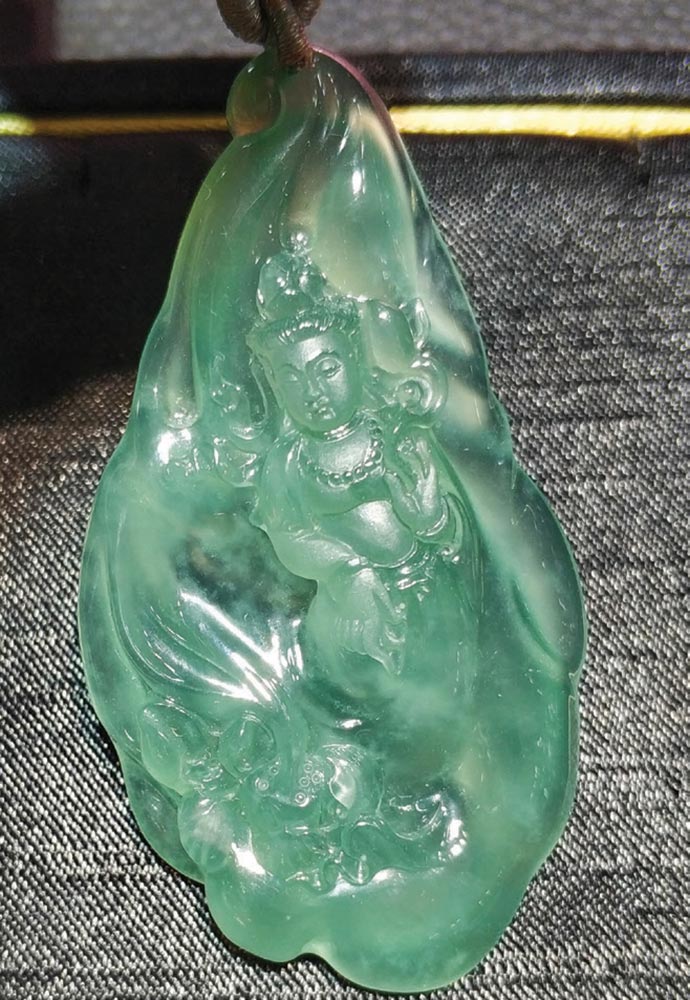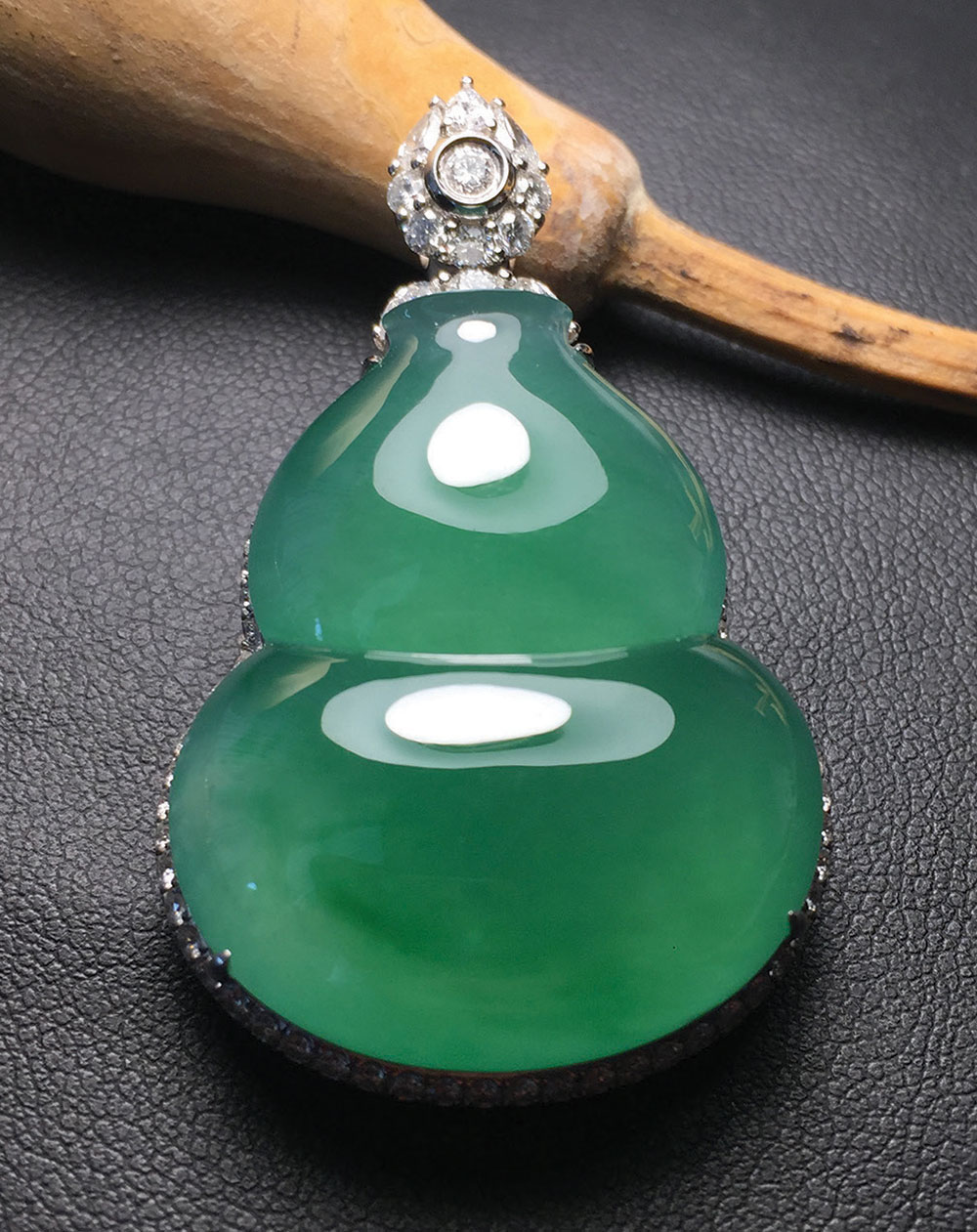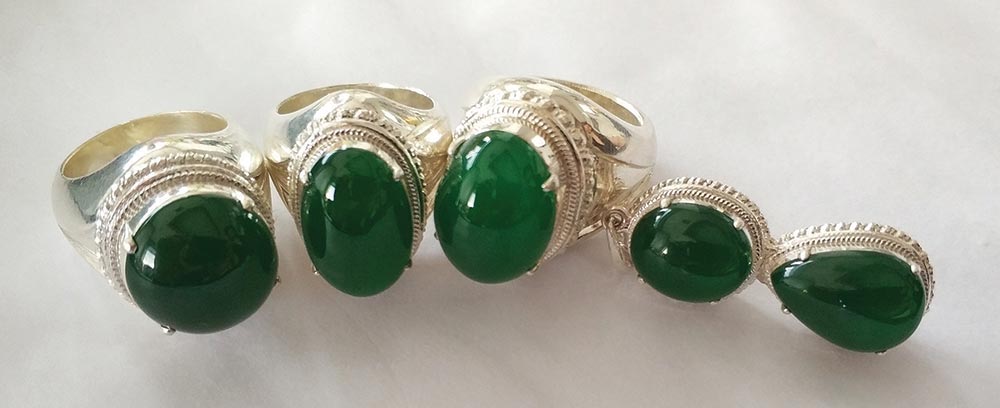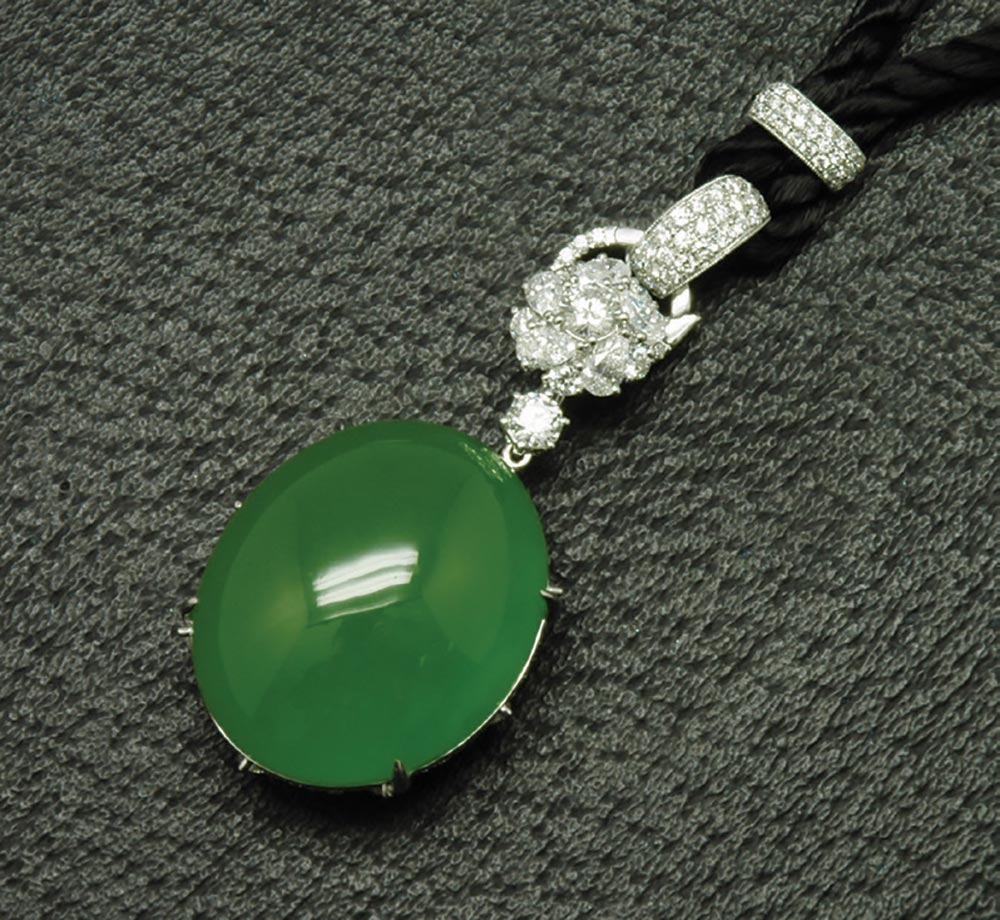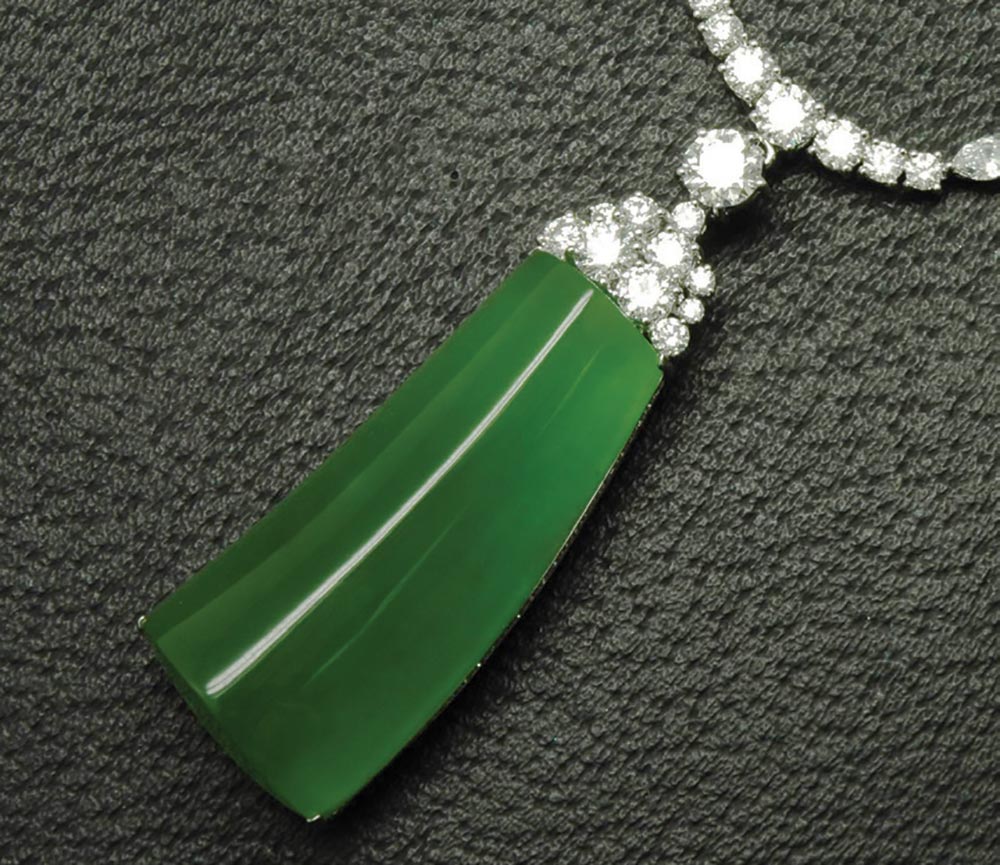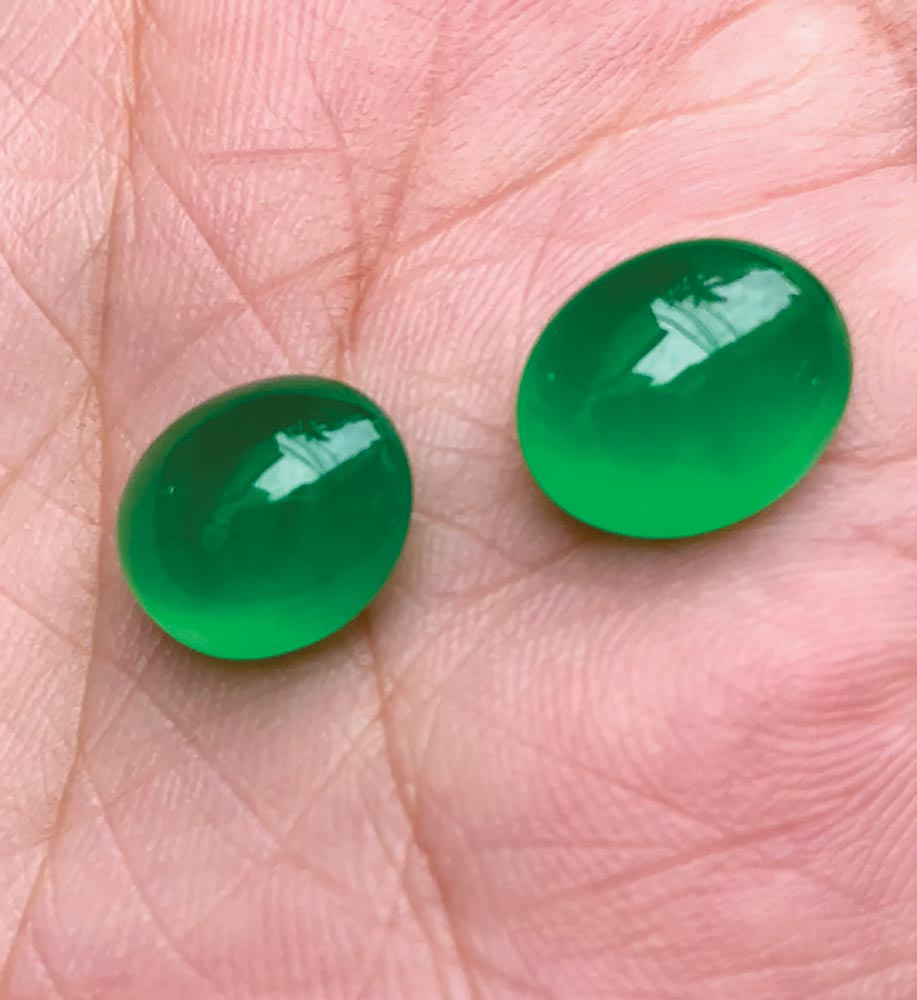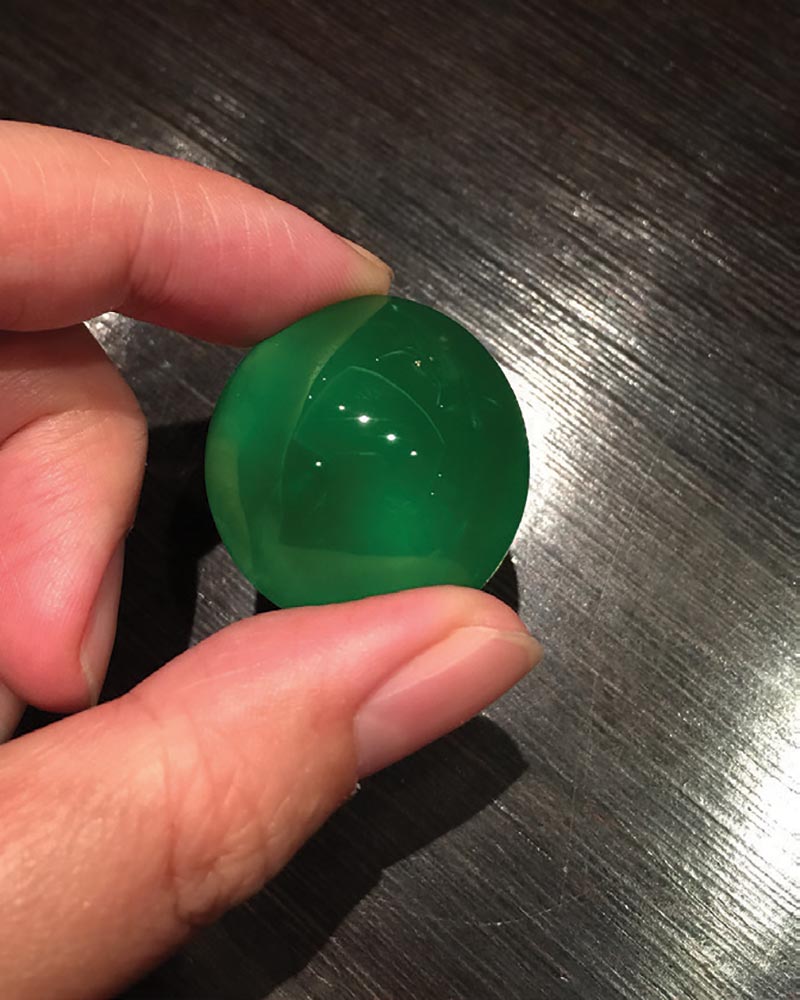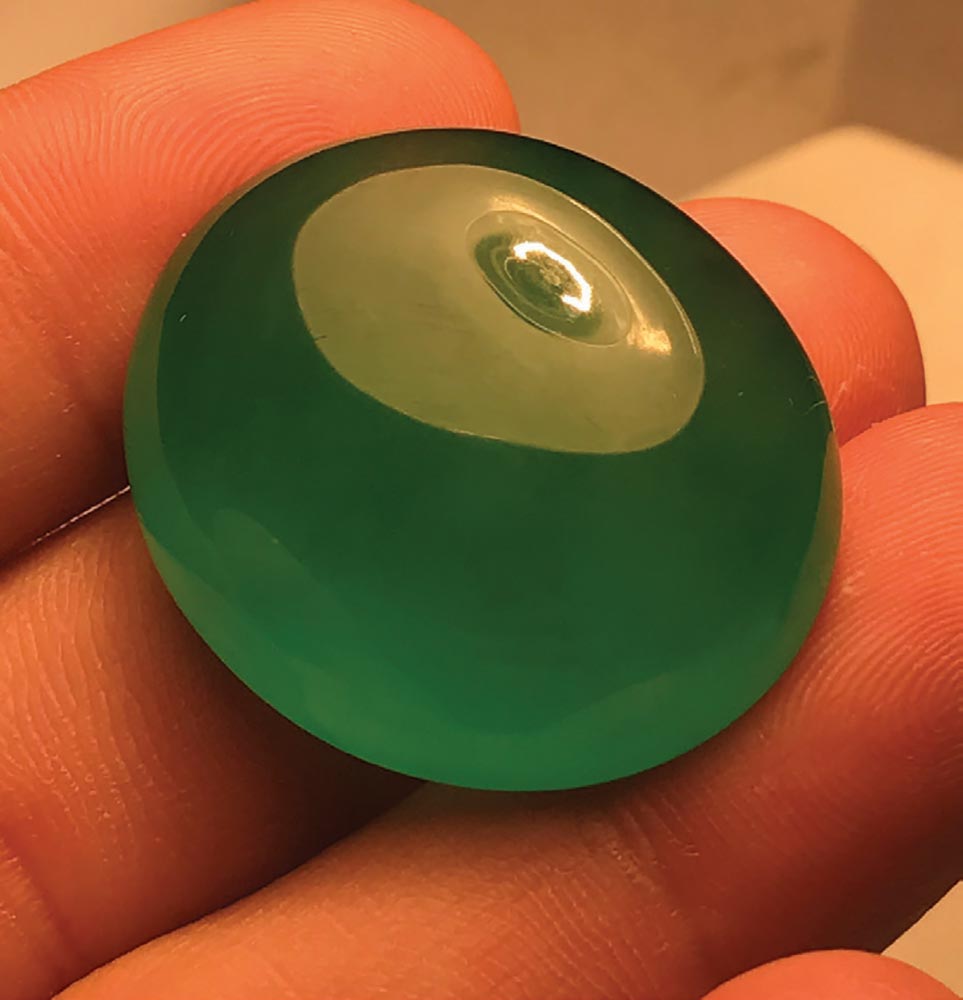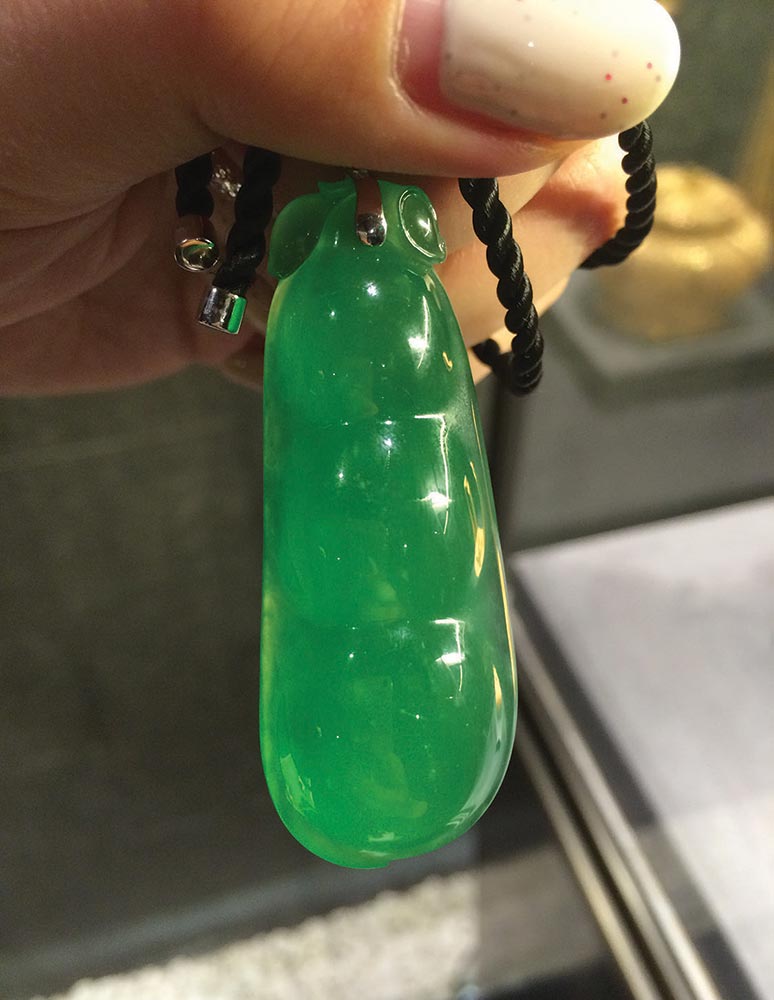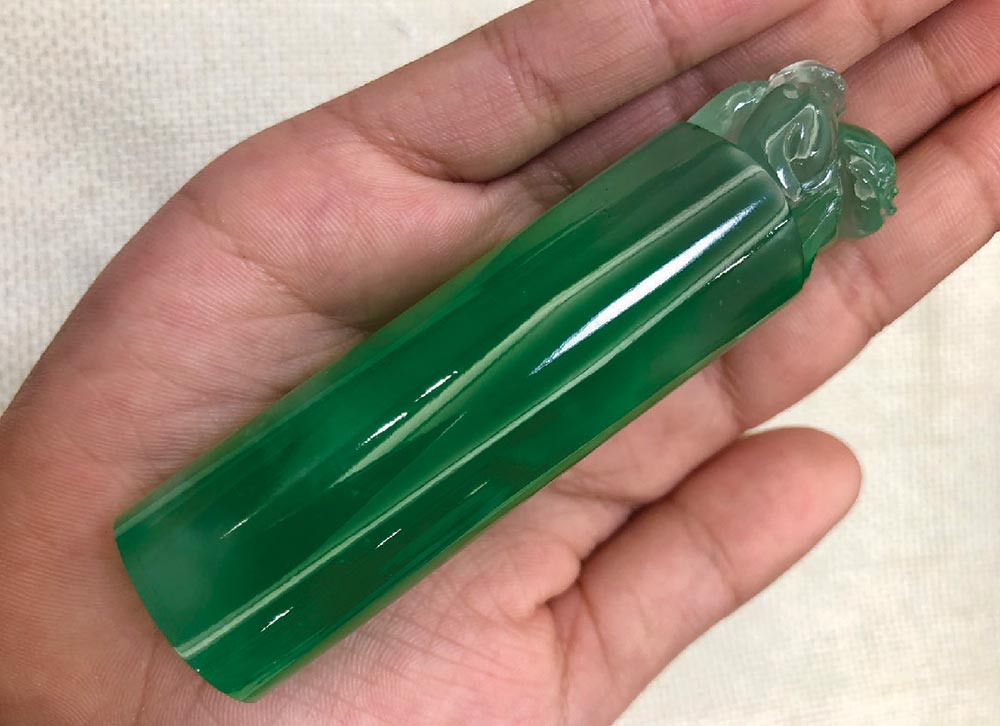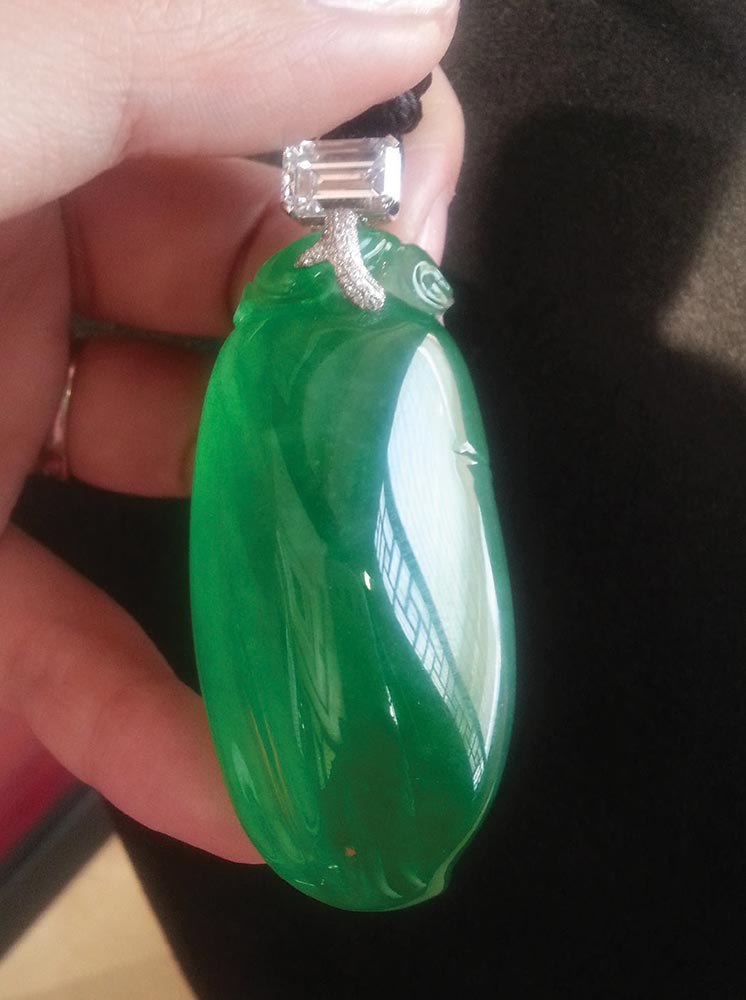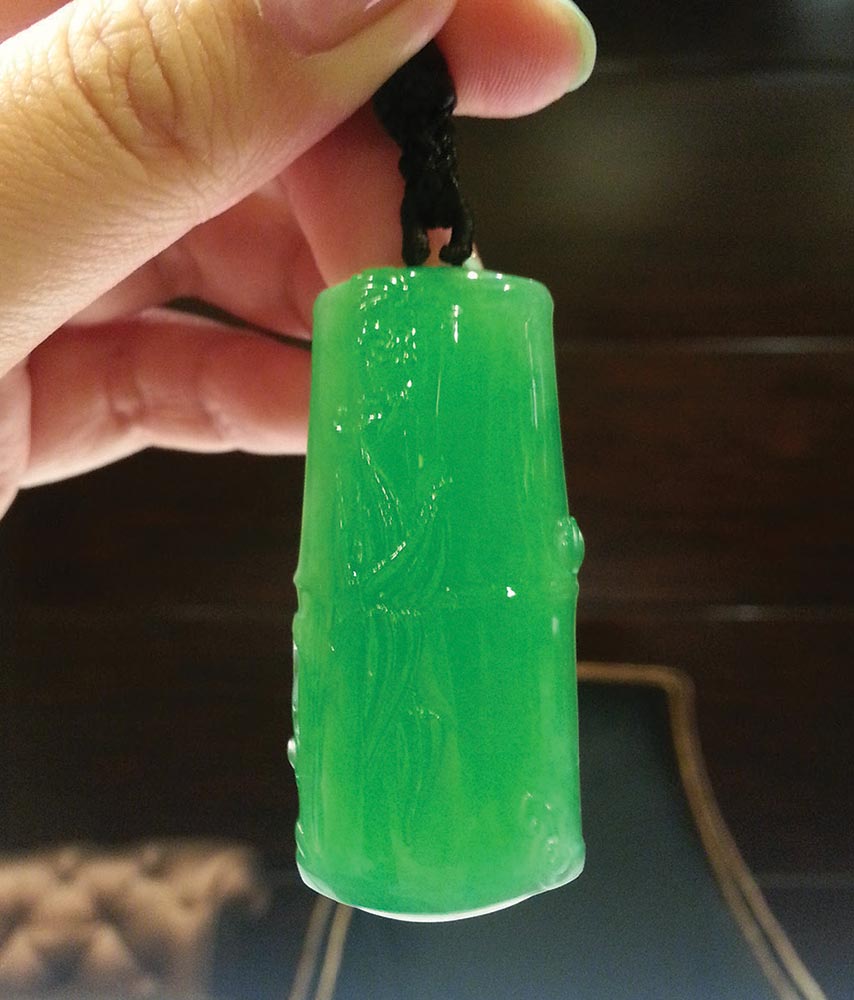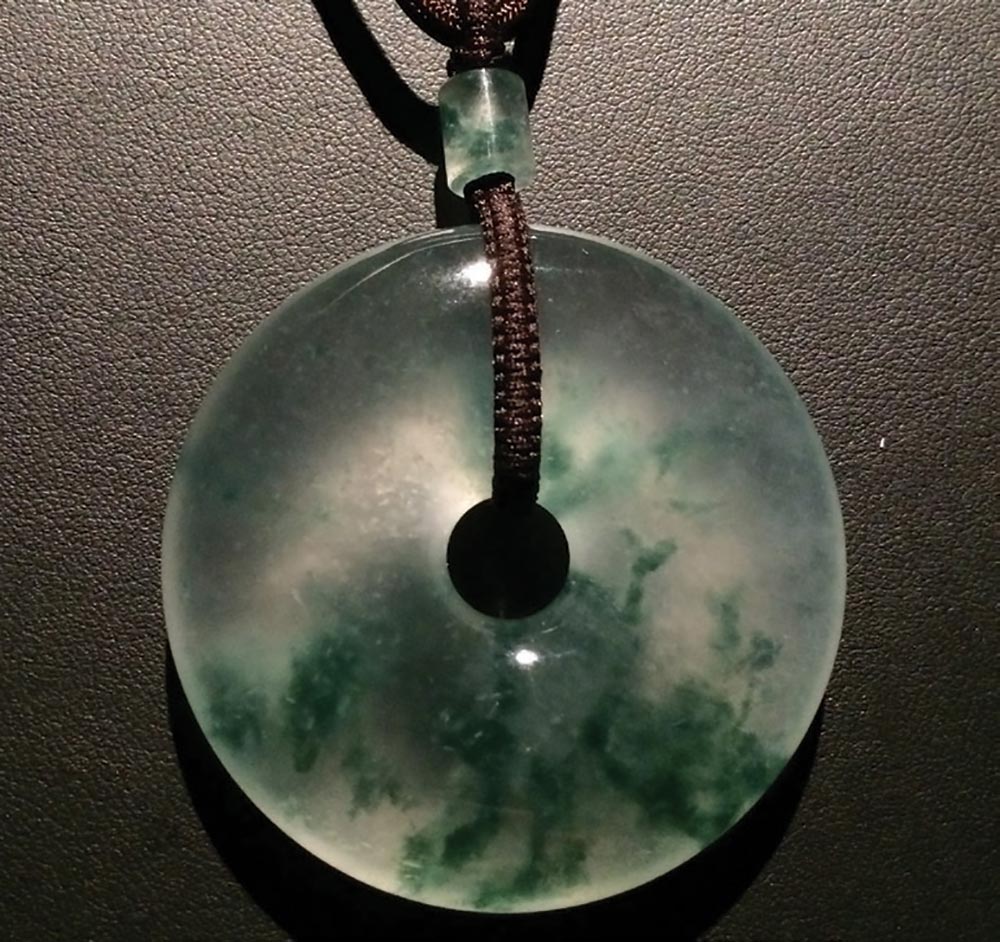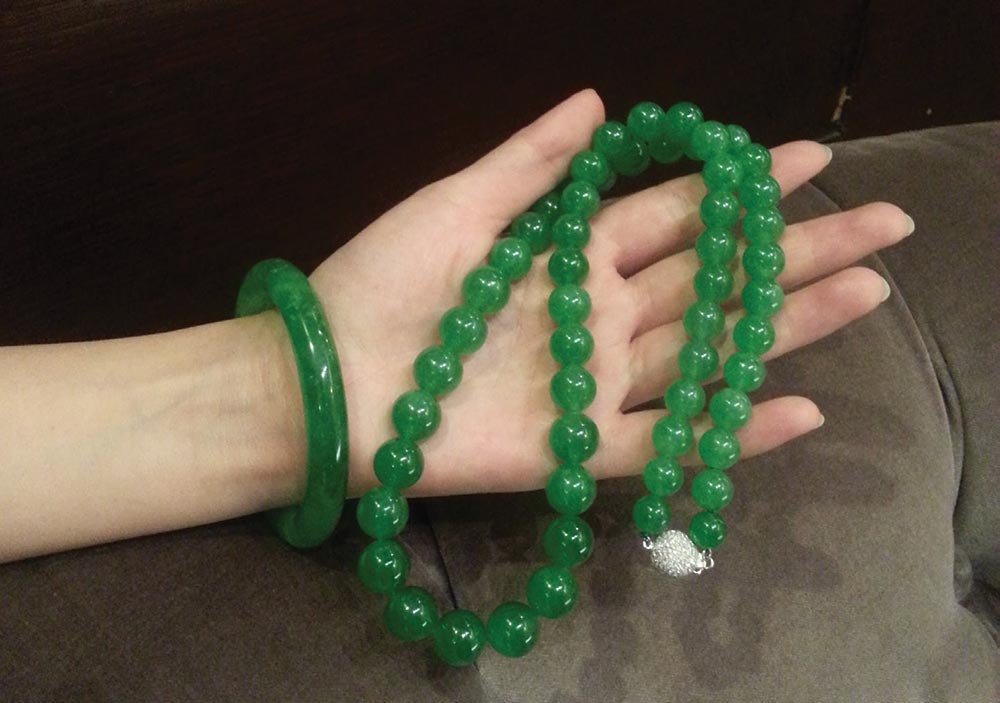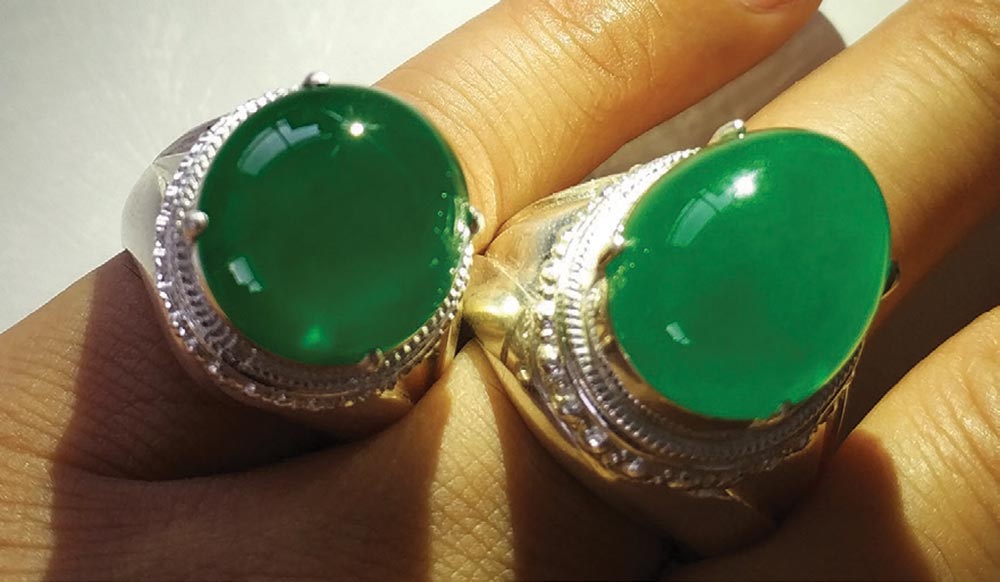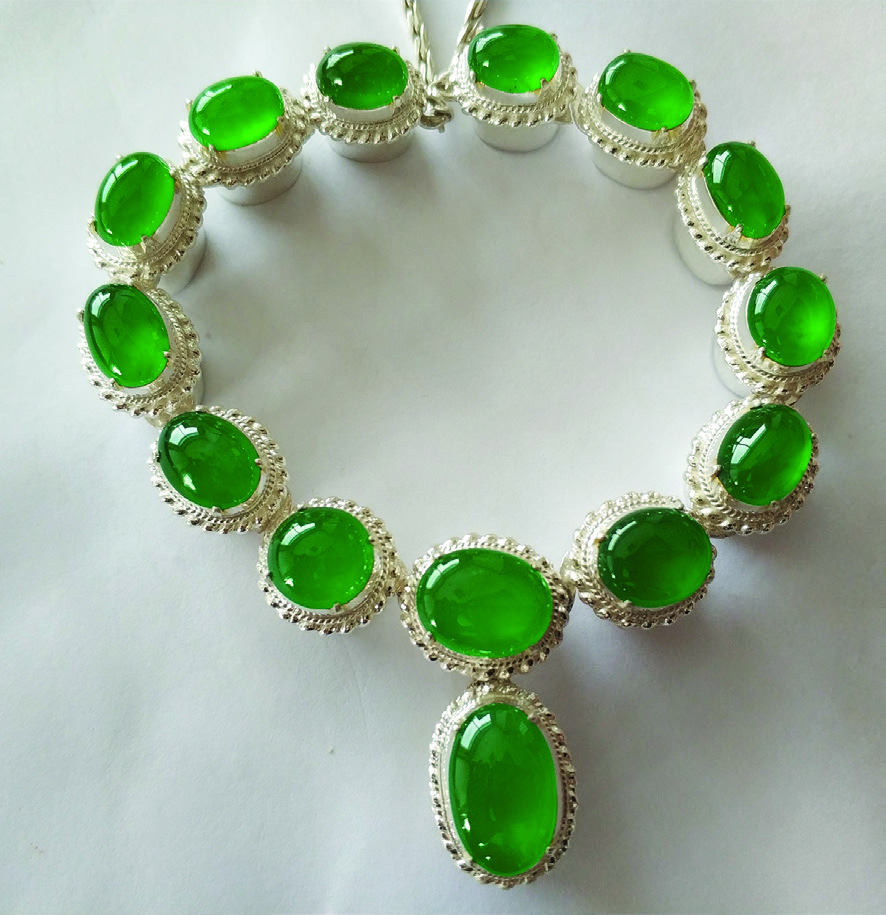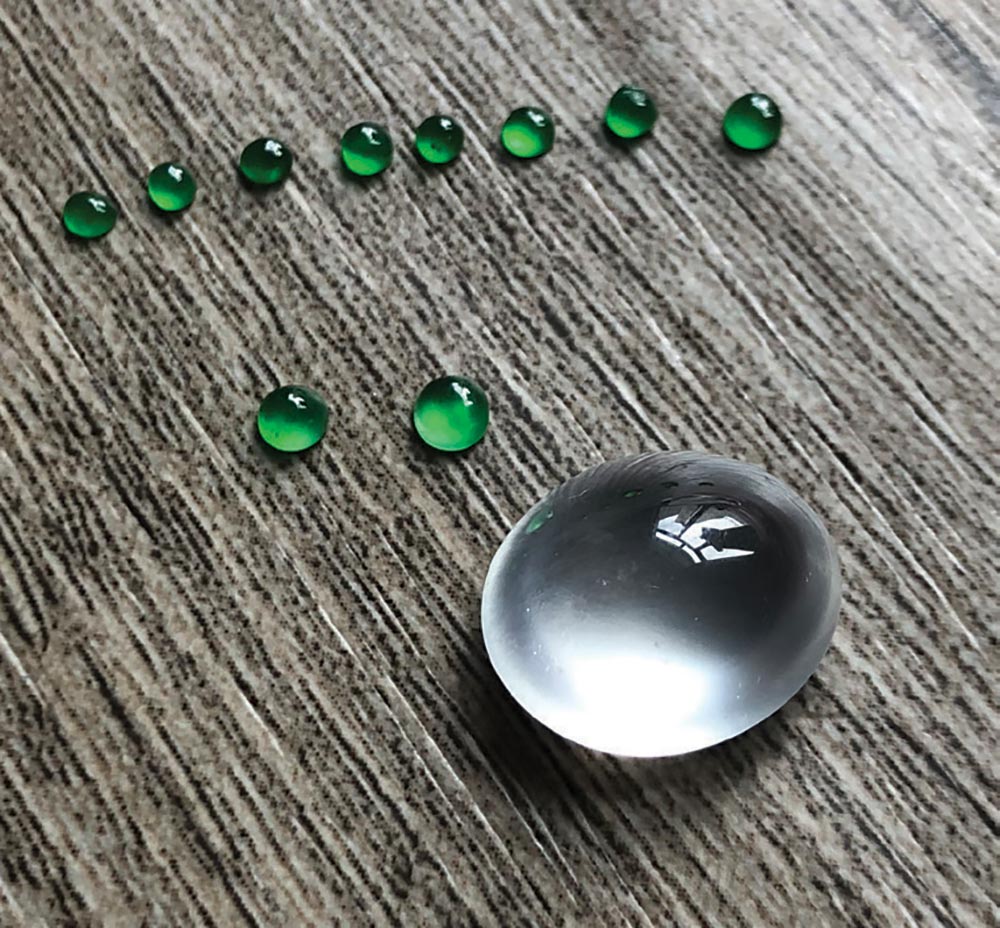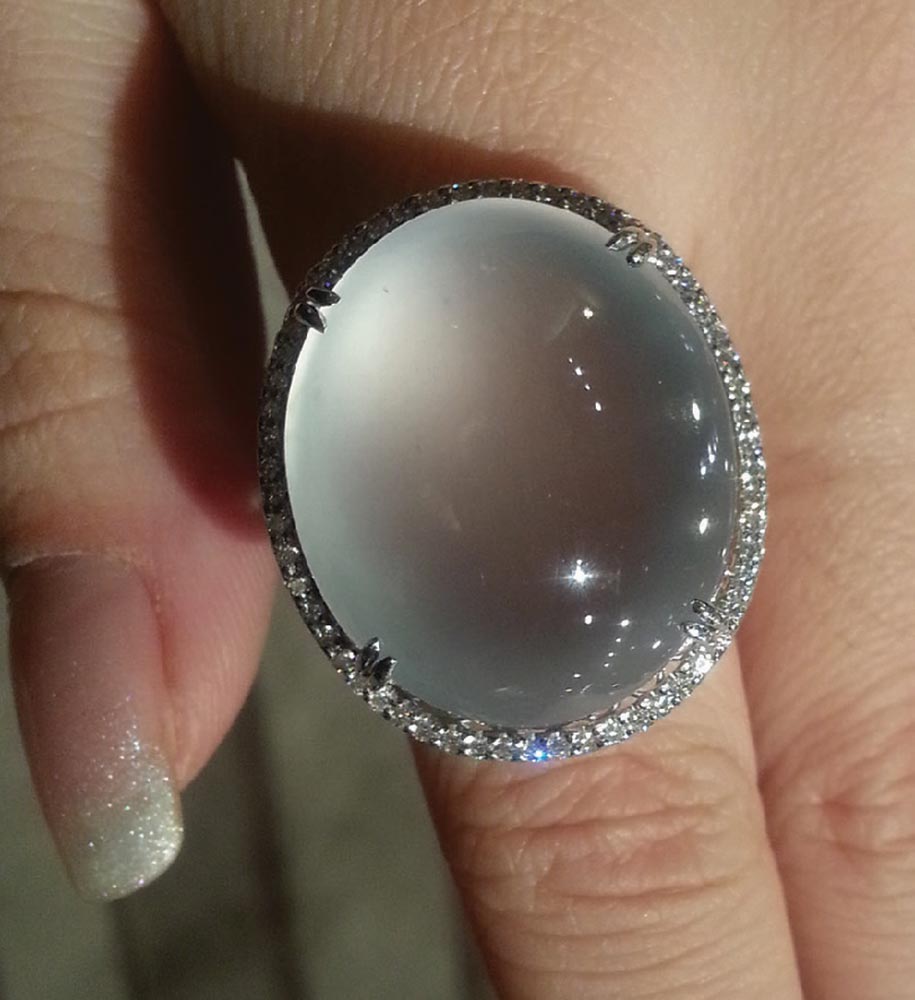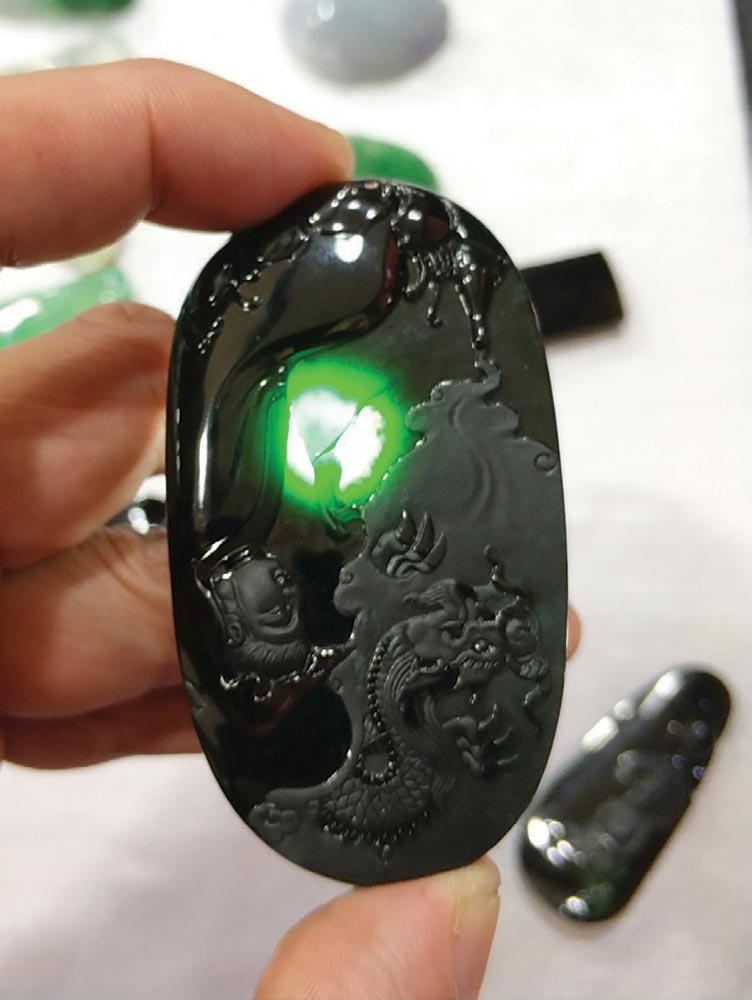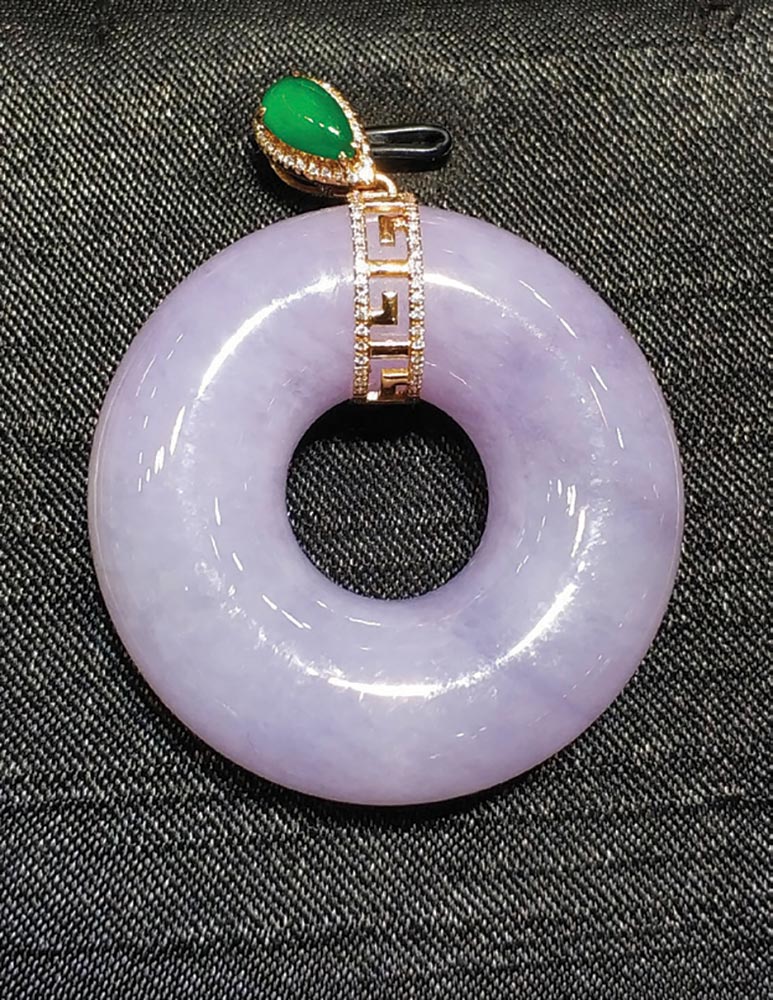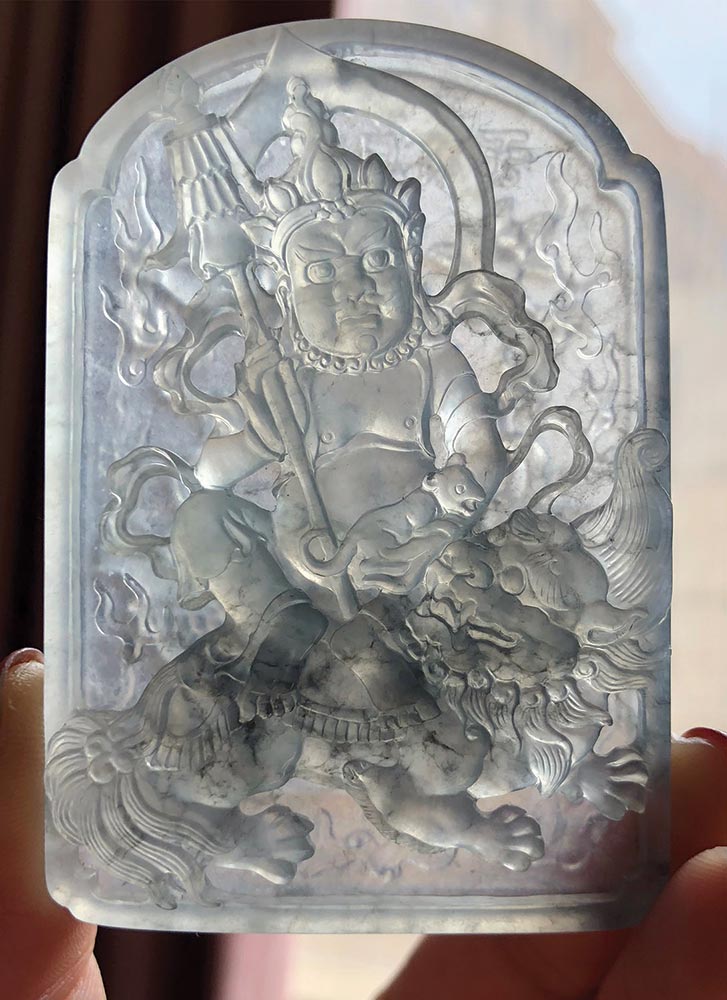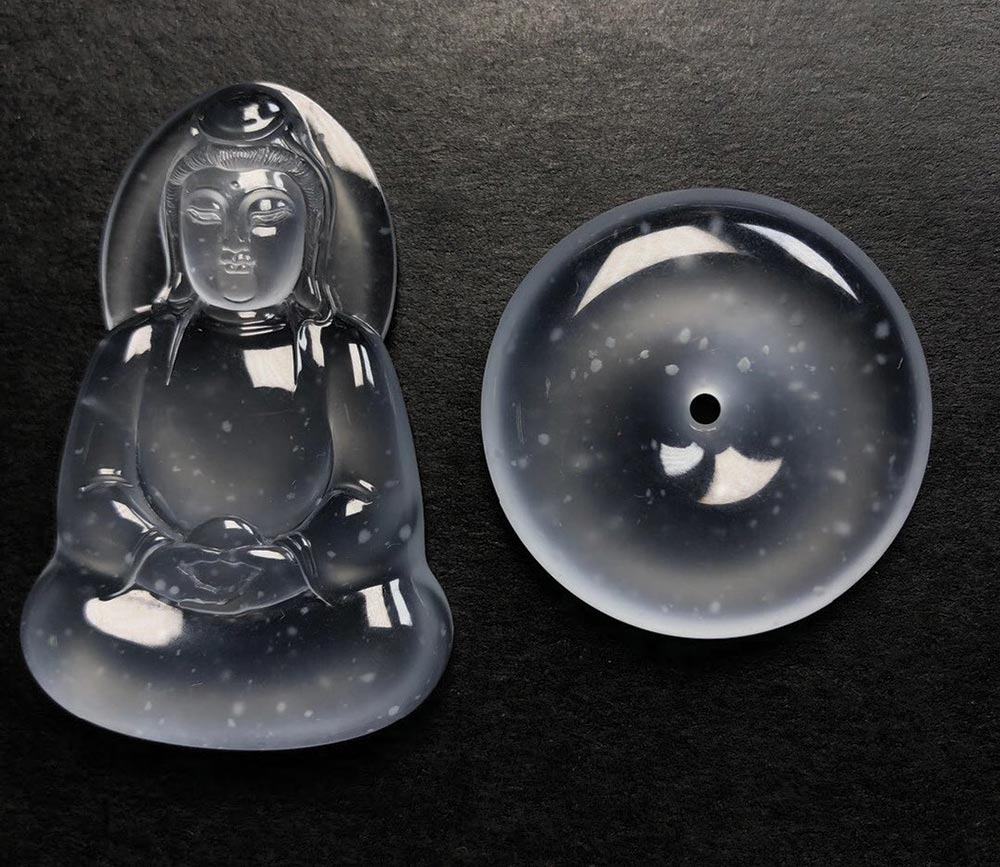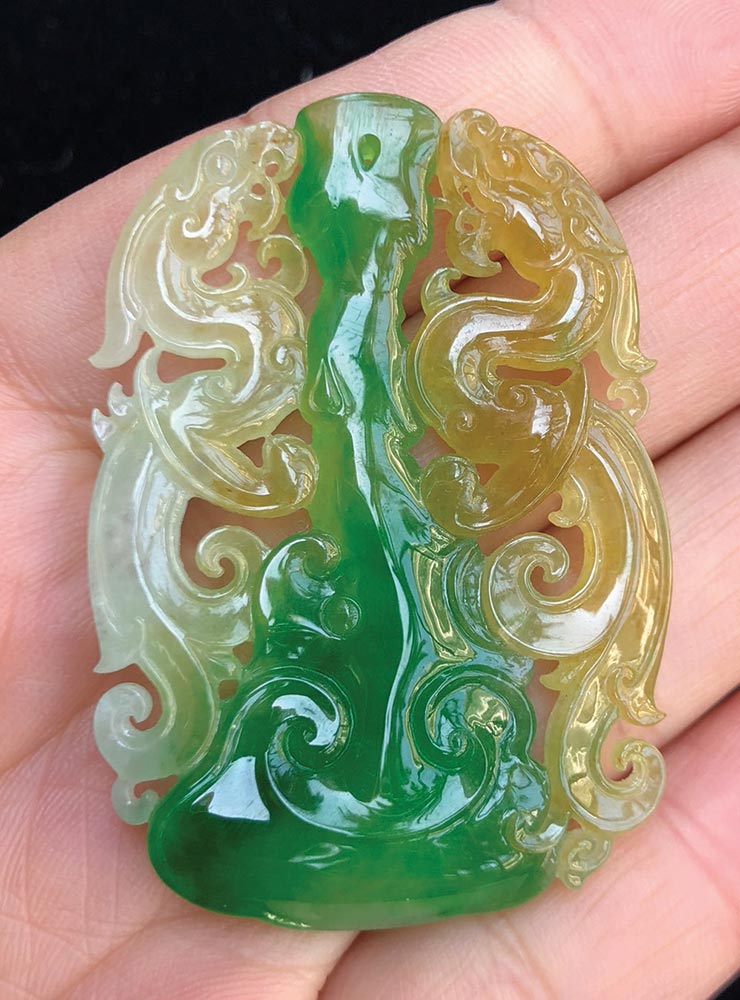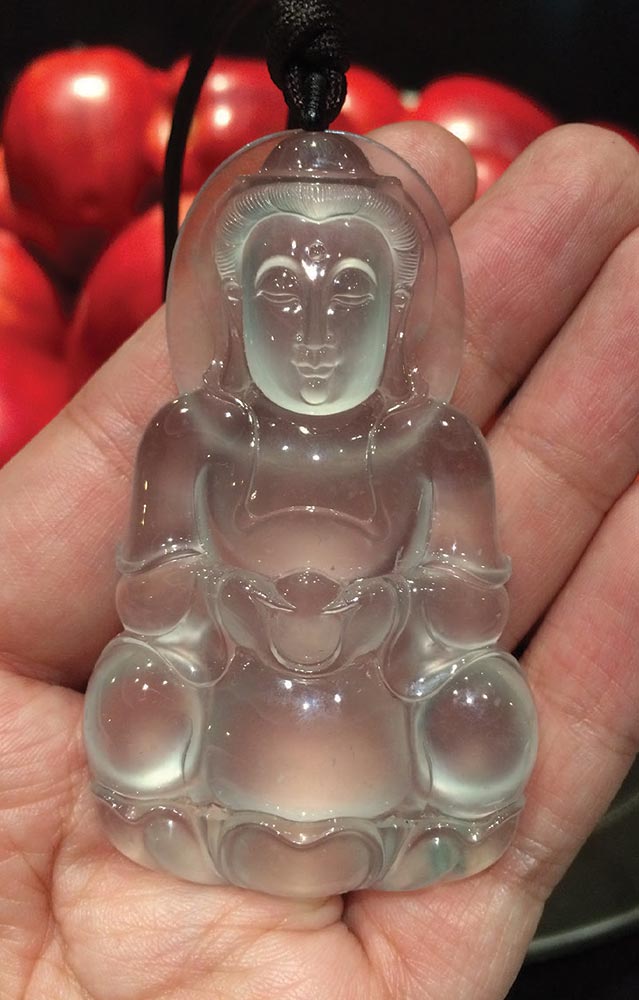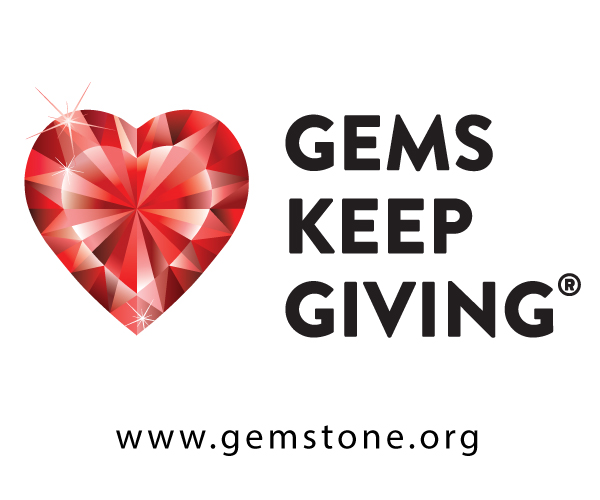Estimated reading time: 7 minutes
Jadeite jade—inextricably linked to Chinese culture—is a one of most valuable gems in the fascinating world of jewelry. For over 100 years, the strongest jadeite jade market has been China. It is not uncommon for a small piece to be auctioned for tens of millions of dollars. Regular prices are not, however, quoted for jadeite jade in trading, and even some international colored stone businesspeople are curious as how to value it from a Chinese point of view.
In the same manner that gold and diamonds are highly treasured in the West, jade has special significance to the Chinese. The term for jade, Yu, is also used in family names as well as in terms that describe people or things that are graceful and beautiful. The significance of jade in Chinese culture is evident, not only historically, but also currently.
Jadeite jade (fei cui, in Chinese) is a one of two types of pure jade; the other is nephrite jade. Jadeite jade is considered to be rarer, more precious and more valuable. As a result, it is praised as the king of jade. There is a Chinese saying: Gold has value, jade is invaluable. It’s difficult to quote a price for jadeite jade to help businesses and customers in evaluating prices, since it is different from diamonds and most other precious gemstones. Even some international gem trading firms are shocked by the high auction prices that jadeite jade jewelry commands, and they want to learn how the Chinese evaluate jadeite jade.
Usually, the Chinese consider several factors when evaluating jadeite jade: texture, transparency, color, cutting, clarity, size and origin. This refers to natural jadeite jade without any treatment, also called Type A in the trade. Jadeite jade that has been treated in some manner, such as bleaching, filling and dying, is unacceptable and of no value for most Chinese customers; the treatment is not durable and the original rough material is of low quality and price.
Texture
An old Chinese saying for evaluating jade is: Beginners emphasize color, while experts emphasize texture. Texture has long been considered a crucial factor in the appreciation of jade, including jadeite jade, since ancient China. Texture reflects the aesthetic value of internal beauty. We usually
use the term Zhong or Di to mean texture. A fine structure stands for a good variety (good Zhong), while a coarse structure stands for bad variety (bad Zhong).
There are many types of commercial jadeite jade, including Glassy, Top-Icy, Icy, Icy-to-Sticky-Rice, Pea and Ceramic, in descending order of quality. There is no obvious boundary between two adjacent varieties. Jadeite like glass is called Glassy; jadeite like ceramic is referred to as Ceramic; Top-Icy is the top quality in the Icy variety and close to Glassy; Icy-to-Sticky-Rice is between Icy and Sticky-Rice.
Transparency
Transparency is another important factor in the appreciation of jadeite jade. Chinese use the term Water (Shuitou in Chinese) to describe the transparency of jadeite jade because it looks like water inside. Sufficient Water means high transparency, while dry means low transparency.
Transparency is inextricably bound up with texture. The Glassy variety is very transparent; Top-Icy is transparent; Icy is sub-transparent to translucent; Sticky Rice to Icy is semi-translucent; the Pea variety is usually opaque.
Color
Ranging in color, jadeite occurs naturally in apple-green, emerald-green, bluish green, leek green, lavender, purplish blue, greenish white, white, black, red, yellow, blue and colorless. Jadeite can also be several colors in a single piece. The color is often also banded and shows green spots.
The grade of each jadeite jade’s color is determined by the purity, intensity, brightness and evenness. The more pure, intensive, bright and even is the color, the higher is the value. Green jadeite jade enjoys the greatest popularity and highest price. Slightly yellowish and bluish tones affect the value. The most highly valued jadeite jade has a vivid emerald green and a glassy texture, which is as revered and as rare as an emperor, so it is called Imperial Green Jadeite Jade in the trade. Similar to the high standard of the Pigeon’s Blood color, Imperial Green usually refers to not only the purity, intensity and brightness of color, but also to the evenness of color and a glassy texture. A small piece of imperial green jadeite jade in jewelry can easily fetch millions of dollars at auction.
The second valuable color of jadeite jade is lavender; it is a mark of honor, nobility and luck, known as the color of spring (Chun in Chinese) in China. Lavender jadeite jade with a fine texture is relatively rare. The next valued colors are red and yellow. Black jadeite jade, which shows green by transmitted light, is also popular in China and commands high prices.
The color of jadeite jade is judged by the naked eye under the mid-day sun—not under artificial light—for appraisal. Bluish-green colors will change to a more pure and more intensive tone under yellow light, and lavender will become more vivid by some white light.
Cutting
Rough jadeite is fashioned into beads, cabochons, shapes for fancy pendants and entire bangle-bracelets. It is also used to make beautiful objets d’art. Bangles, oval cabochons for rings and strands of beads are priority choices for jade cutters and are usually more valuable than others, even more than carved pendants with more artistic craftsmanship. This is understandable since those three cutting shapes also need the best rough material, while a carved pendant, even intricately and artistically carved is often made with what remains from the inside of a bangle.
These three shapes in high quality bracelets often demand millions of dollars at auction. The following factors should be considered when evaluating a cabochon: the shape, symmetry, width and especially the proportions of height and width.
Clarity
Flaws are usually unavoidable in jadeite jade as it is a polycrystalline aggregate and not monocrystalline
mineral. Flaws in the best Glassy variety may be inconspicuous to the naked eye, however, in Icy varieties, they are obvious. There may be black or white spots, silky and cotton wadding flaws, inner or inner surface cracks, etc.
Even tiny cracks determine the value compared to other flaws. The value of a jadeite jade will decrease dramatically, normally about ten times, if there are obvious cracks, especially for a bangle, cabochons and beads.
If a crack extends to the surface from the interior, It would be valueless for jewelry.
Size
Different from most colored stones, carat weight is seldom used to value jadeite; it is less important than the dimensions of the fashioned piece.
In comparing high quality jadeite jade of the same quality, color and transparency, the bigger the size, the higher the price. For example, a bigger jadeite jade cabochon is much more expensive than a smaller cabochon of the same grade.
However, we can’t make an easy judgment that a larger sized carved pendent is more expensive than a cabochon of the same quality.
Origin
It is difficult for gem labs to make an origin determination of jadeite jade because it is composed of several minerals and is extremely variable. The main source of jadeite is Myanmar (Burma), which is also the main source of the highest quality jadeite jade.
High-quality jadeite has also been found in Guatemala and has appeared in major Chinese jadeite markets in recent years. Jadeite dealers are, however, cautious about trading jadeite jade from Guatemala and seldom mention it to their customers. These dealers can discern the differences between Guatemalan and Myanmar jadeite jade based on experience. Differentiating the two is still, though, a challenge for international gem labs.
Gem quality jadeite is found in Japan, but the quantity is much less than the large Japanese demand. Jadeite is also reported from America, Kazakhstan, Russia, Canada, Italy, Turkestan and more, but for now at least, little high-quality jadeite jade from these localities appears in major markets.
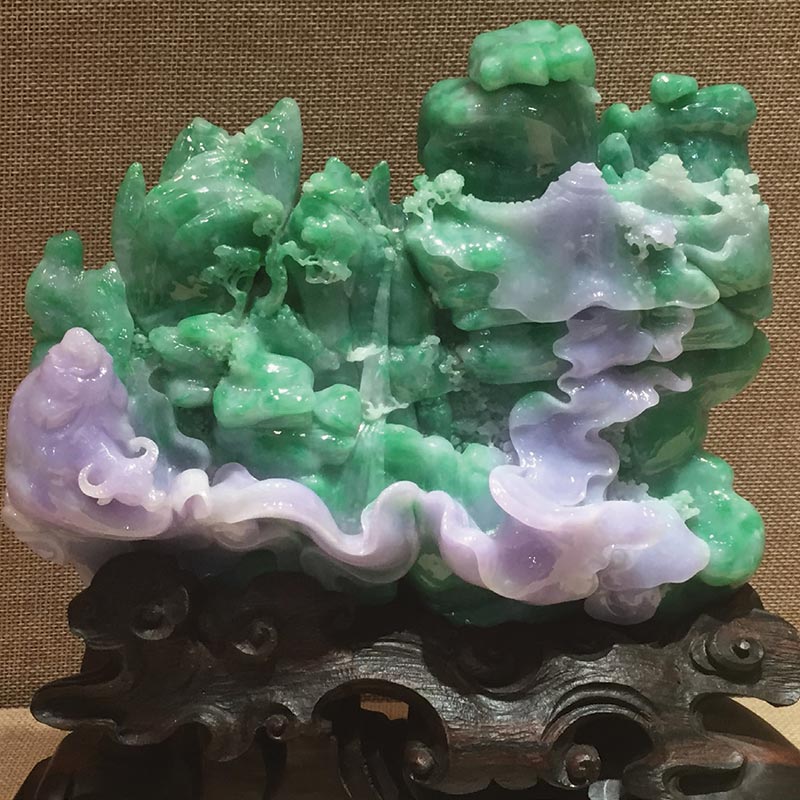
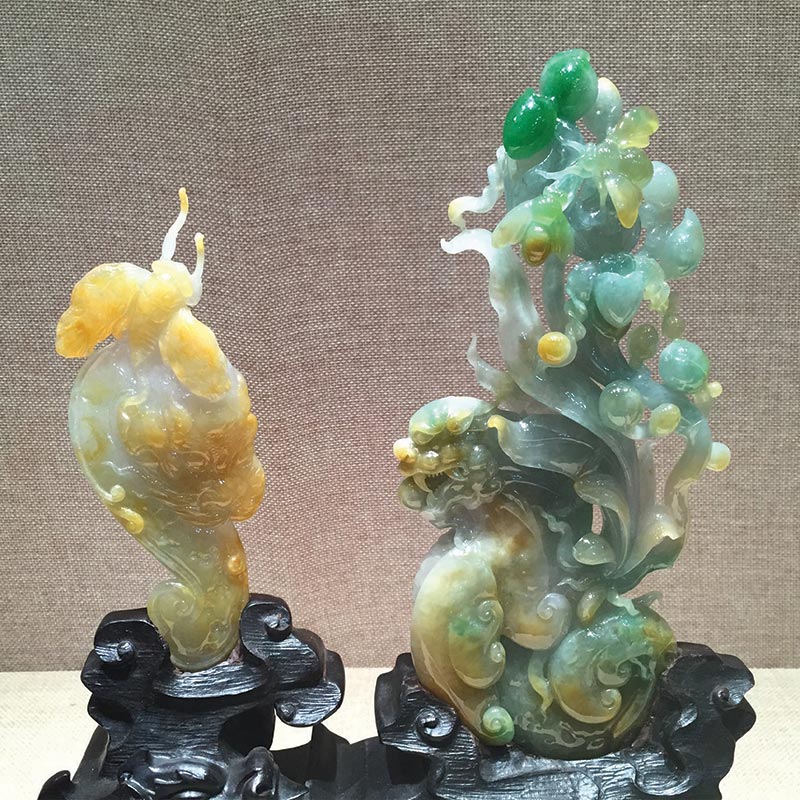
About the Author
Geng LI, Ph.D., FGA, is with the School of Gemmology, China University of Geosciences, Beijing, China. He also is a member of ICA. He may be contacted at ligeng@cugb.edu.cn.
Images are courtesy of the author.



